Calico and satin for bed linen: properties and differences of fabrics
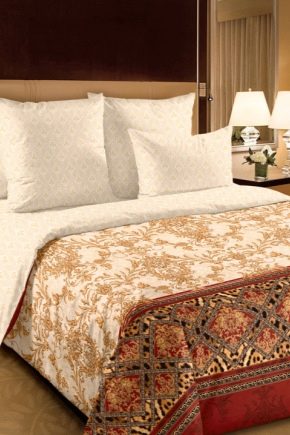
The choice of bed linen is a rather important issue, which will directly affect the comfort and quality of sleep. However, today there are quite a lot of materials used for sewing kits, among which coarse calico and satin are in special account. Therefore, in order to make the right choice, it is necessary to have a clear understanding of the properties of each material, its positive and negative characteristics.
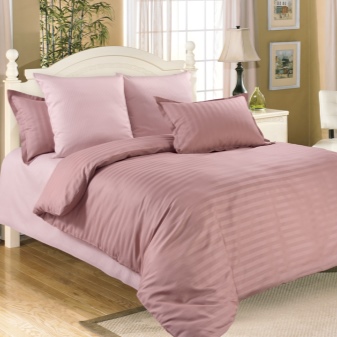
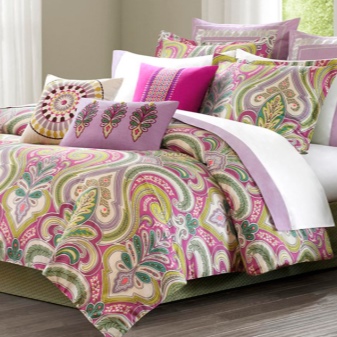
Overview of textile compositions
Today you can find bedding sets from a variety of natural, synthetic and combined fabrics. They can have different weaving, tactile properties, colors and a lot of other parameters that are different from each other. Therefore, it can be quite difficult to choose a suitable option from the available variety. But from the entire list of materials, sets of satin and coarse calico are especially in demand, the main characteristics of which will be discussed in detail below.
The history of the origin of coarse calico goes back to Asian countries, where this raw material was originally intended for sewing outerwear and underwear. Printed calico found its application in the manufacture of children's and women's outfits. Today, a similar material has begun to be used as a raw material for sewing duvet covers, sheets and pillows. This is due to the mass of positive features of the fabric, as well as its acceptable cost.
Calico, in fact, is a dense cotton fabric with a perpendicular weave of threads. Without processing, the material is very similar to a paper canvas, hence the ingrained name of white coarse calico, which is called canvas. The fabric stands out against the background of other cotton raw materials with a high level of practicality and wear resistance; in the course of giving the material shades and patterns, dyes of exclusively natural origin are used.
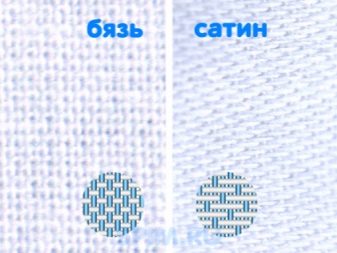

As for the density, this parameter varies in the range of 50-140 threads per 1 cm2. The cost of products is formed based on the type of weaving fibers used. Usually, the thinner the thread, the stronger and denser the fabric, which means the cost of the final product will be high.
On store shelves, you can find several types of coarse calico, from which bedding is sewn:
- plain dyed raw materials - usually monochromatic products;
- printed material - such products have a multi-colored pattern, ornament, etc.;
- bleached calico - bleached raw material;
- unfinished material - made, but not processed, is not used for sewing linen.
Bleached linen has the lowest cost, such linen is sold in a plain light color and medium hardness. Plain colored bedding also has a solid color, but it can be of different colors. Printed calico is the most popular, since this particular option is presented in a wide range of colors. This material is preferred to use for sewing baby kits and diapers due to the softness of textiles.


The composition of the fabric can include not only cotton, but also other artificial threads, thanks to which manufacturers increase the wear resistance coefficients of their products. A more accurate list of the included materials in the kit is usually indicated on the product label.
Satin was also first made in the east, from where the fabric gradually spread throughout the world.The demand for such a material was determined by such qualities of the fabric as strength, long service life, in addition, the raw material possessed beauty and softness, which was quite often compared to silk. Now the material is used both for sewing bedding and for making clothes and upholstery for upholstered furniture.
Satin does not accumulate dirt on its surface, so it can be safely usedeven if there is a furry pet in the house. With regard to durability, it has been found that satin linen perfectly withstands more than three hundred washings, while not shrinking. As a separate advantage of the material, one can single out positive emotions and comfort when using such linen in bed.
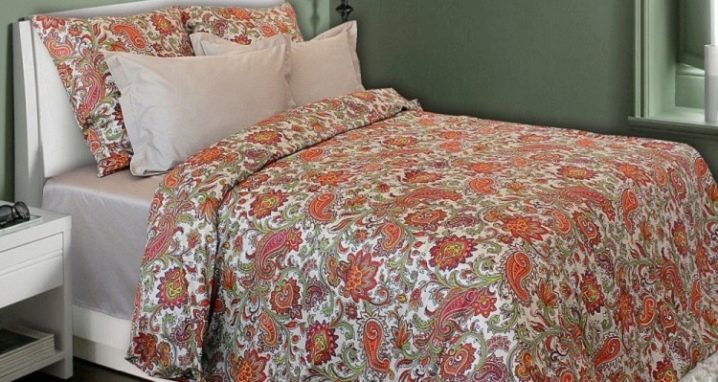
The appearance of satin products stands out for their presentability. In order to improve such indicators, manufacturers quite often resort to the process of fabric mercerization, the essence of which is the processing of raw materials with alkali, which gives shine to the products. In addition, during the production of products, the calendering technology can be used, when the material passes the rolling procedure with heated rollers, which makes it possible to turn the round thread used for the manufacture of cotton fabric into a flat one.
Satin is notable for its weaving, since silk and cotton threads are used in the production of raw materials, which are twisted using the double weaving method.
As a result of this work, a uniquely soft satin surface is formed, and a dense twisted thread gives the material shine and reflective qualities. The material belongs to the category of dense textile products, therefore the number of threads per 1 cm2 is from 120 to 140.

The following types of satin can be found on sale:
- bleached;
- printed;
- plain dyed.
Also, bedding sets are quite often made from special varieties of this material:
- silk-satin, where cotton and silk threads are used;
- jacquard - a material that is made using a woven pattern; such products have no wrong side;
- mako-satin is a raw material, the production of which involves the use of only cotton threads, due to which the products acquire a unique shine.
The cost of plain or processed sateen to a large extent exceeds the price of coarse calico, due to the peculiarity of the weaving of the first material, but the durability of the products pays for the price declared by the manufacturer for the finished products.
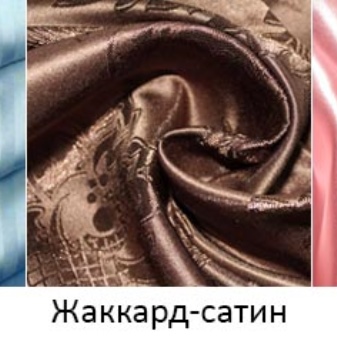
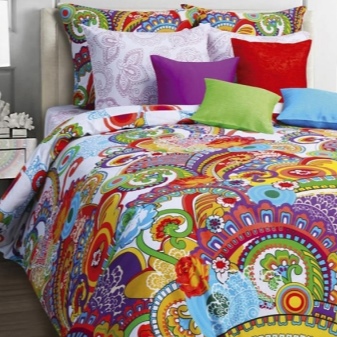
Comparison of the advantages and disadvantages of fabrics
Since both fabrics are quite popular for use in bedding, the positive and negative aspects of each material should be considered. Satin has the following set of benefits:
- the fabric is not prone to wrinkling, so ironing after washing is not necessary;
- wool, hair and other dirt does not stick to the material;
- satin does not conduct electricity;
- the material stands out for its wear resistance and does not shrink even after washing at high temperatures;
- satin bedding stands out for its high attractiveness in appearance;
- high tactile performance, which has a beneficial effect on the quality of sleep;
- in terms of smoothness, the material is not much inferior to silk, but has a more affordable cost;
- as a rule, the seamy side contains a roughness, which makes it possible to avoid the bed from rolling out of bed during sleep;
- the fabric has the ability to retain heat, so it can be used without problems in the cold season;
- the material retains the brightness of colors for a long time.
Like any other material, satin has some disadvantages:
- due to the property of retaining heat well in a highly heated room, it can cause overheating;
- satin is unlikely to be in harmony with silk or other materials due to the difference in roughness, which can cause some imbalance in sensations;
- despite the lower cost in comparison with satin and silk, satin bedding is still an expensive product
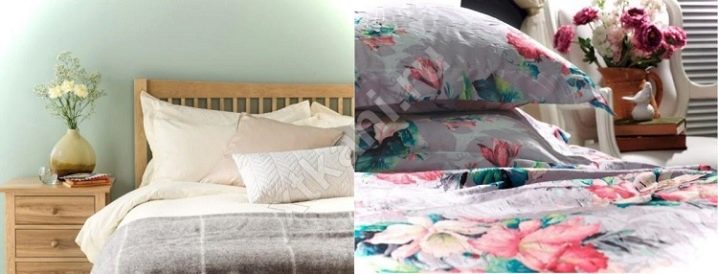
Regardless of the fact that coarse calico is still inferior to satin in some parameters, the following positive qualities are inherent in the fabric:
- more affordable cost of production;
- coarse calico accumulates heat well, therefore it does not cool when used in winter;
- for lovers of naturalness, the material is the most suitable option, since such bedding sets are most often not stained, but simply bleached;
- the material does not require special care conditions, due to which the bedding can be machine washed in any mode;
- coarse calico is a double-sided material, so you can lay bedding on either side;
- raw materials with a high density or the addition of synthetic thread practically does not wrinkle;
- painted sets, as a rule, retain their original color and brightness of paints for a long time;
- the material is lightweight and hypoallergenic;
- perfectly breathable.
There are coarse bed linen sets and disadvantages:
- for people with particularly sensitive skin, such kits may seem a little rough to the touch;
- the presence of artificial threads can cause pellets to form on the surface;
- completely natural composition will crumple.
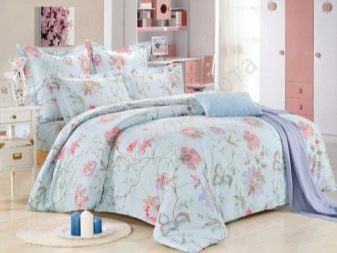
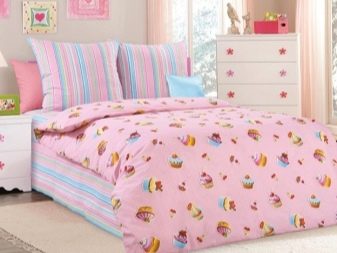
Which is better?
Bed linen is not just a set consisting of a sheet, a duvet cover and a pillowcase, but products on which comfort during rest will largely depend, as well as the appearance of the bedroom and mood in general. However, it is quite difficult to find a consensus as to which fabric is better to purchase products from - coarse calico or satin.
In each individual case, the priority parameters and requirements for bed linen may be color design, material density, the cost of a finished set and other nuances.
However, on the issue of preferences in choosing between coarse calico and satin, the following can be noted - coarse calico bedding is considered an ideal option for people who prefer minimalism in everything, combined with an affordable price and practicality. As for satin, this type of material for linen in the bedroom will become relevant for those who prioritize the quality of the product and are ready to pay a higher price for it.
But both materials, each in their own way, perform well in terms of exploitation, so the choice will concern personal preferences.
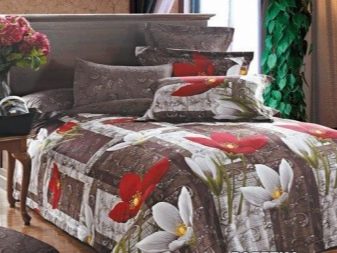
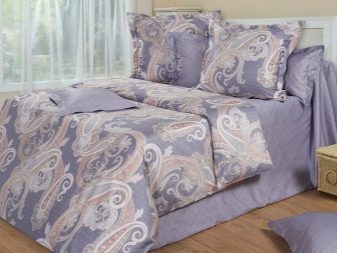
Reviews
According to the reviews of many consumers, satin and coarse calico sets delight with their practicality during use for a rather long period of time and a large number of washes.
According to some responses, coarse calico is still characterized as a more durable material, which affects the service life of bed linen, in comparison with satin. However, in this matter, the trademark of the products and technologies that are used in the production of these products play an important role.
Many positive reviews can be found in relation to satin sets due to the absence of the need to iron them after washing. In addition, housewives who value luxury, but experience discomfort while relaxing on slippery silk, have found an excellent alternative in satin sets, which stand out in the existing range of products with a presentable look, softness and beauty.
Responses about dyed calico linen sometimes contain information about some loss of color after a dozen washes. But in general, satin and calico are not prone to fading, so they can be washed along with other things without fear.
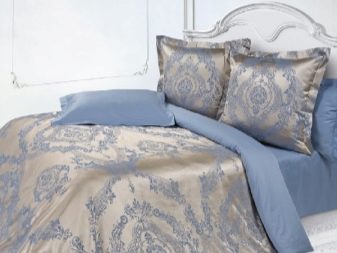
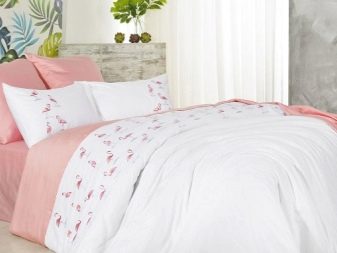
For information on which bedding is better, made of calico or satin, see the next video.













The comment was sent successfully.